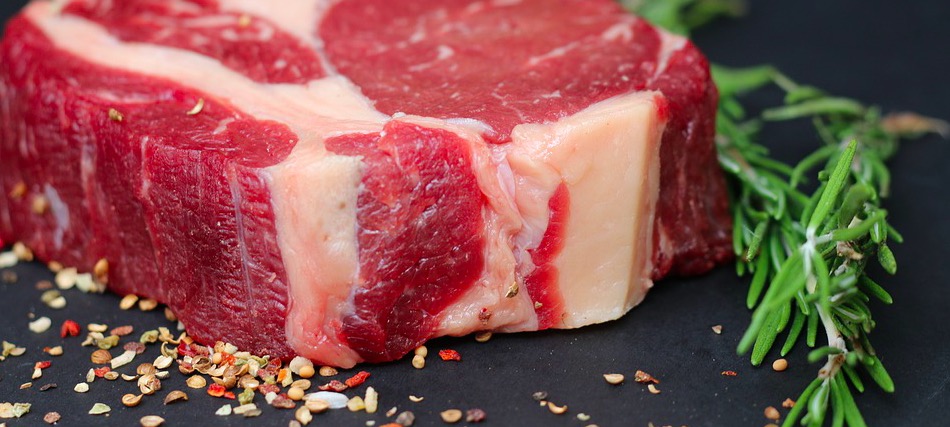Your Meat Could Soon come from a Laboratory, Not a Farm
The case for lab-grown meat and its potential for the future

Just the concept of a steak being grown in a lab seems like something out of a science fiction movie. And yet, the technology is well on its way to being developed as several startups try to perfect the production of meat without the need to raise and slaughter animals. Finding an alternative way to produce meat is of paramount importance as the meat industry is one of the leading causes of environmental degradation, global warming and poor ethical practices. Given these issues, there is little wonder why lab-grown meat is being seen as the future of food. The company that cracks the code, could be sitting on a potential gold mine, as meat is consumed at [1] "almost 300 million tonnes today. If not stopped, that number could double by 2050." If things continue at this rate, environmentalists from across the world have warned that our planet could face huge, unpleasant changes.

What is Lab-grown Meat?
The process of creating lab-grown meat can be broken down into three different steps. First, scientists collect a suitable muscle sample from an animal. Next, stem cells are collected from the muscle tissue and allowed to multiply at a rapid rate. Finally, these cells differentiate into primitive fibers, bulk up and form muscle tissue. In fact, it is claimed by companies like MOSA that [2] "one muscle sample could produce, 80,000 quarter-pounders." This isn't a small movement, either. Big-shot players like Bill Gates see the future in lab-grown meat and have pledged considerable backing to advancing the industry forward.

Water Savings
The purpose of lab-grown meat is to create an alternative way to enjoy our favorite foods without all the negative side effects. The benefits are rather surprising, given just how drastic the water savings from lab-grown meat are. [3] "just to produce 1 pound or about a half a kilo of meat requires more than 2,400 gallons, compared to maybe just 25 gallons of water [for lab grown]." On average, with lab-grown meats, we could be seeing around [4] "82-96% lower water use depending on the product compared."
Energy Efficient
The amount of energy required to produce meat in its current state is astronomical. It is estimated that by consuming lab-grown meat, energy savings could decrease anywhere from 7-45 percent. This figure, when considered on a global scale, would certainly have a massive impact on our energy consumption.
Drastically Reduce Greenhouse Gases
The meat industry is notorious for being one of the largest producers of greenhouse gases. [5] "At a global scale, the Food and Agricultural Organization (FAO) of the United Nations has recently estimated that livestock (including poultry) accounts for about 14.5 percent of anthropogenic greenhouse gas emissions." When we consider that lab-grown meat produces [6] 78-96 percent less greenhouse gases, the case for this alternative form of meat really begins to stack up.
Remarkably-low Land Usage
Currently, about [7] 30% of the Earth's land (not covered by ice) is being used to raise animals for consumption. This is a remarkable figure considering the crisis of overpopulation and habitat loss. Again, lab-grown meat seems to provide an amazing solution to the problem as it requires only [8] 1% of the land requirements that are currently being used for raising animals.

Lower Cost
As with any new technology, one of the primary barriers to entry is cost. Just two years ago, Professor Mark Post, a faculty member of Maastricht University in the Netherlands, was part of the team of researchers who developed the first lab-grown hamburger patty. Back then, [9] "It was $350,000 [for the] patty." However, since then, the cost has dropped by around 80 percent and according to Post, [10] "it [won't] be long before we hit our goal of 65 to 70 dollars per kilo." This would mean that a 5 ounce patty would cost around $10. This price is expected to drop even further as several [11] "grocery stores and restaurants have already been very vocal about adopting lab-grown meats."

[1] https://interestingengineering.com/here-are-5-things-you-should-know-about-lab-grown-meat
[2] https://interestingengineering.com/here-are-5-things-you-should-know-about-lab-grown-meat
[3] https://interestingengineering.com/here-are-5-things-you-should-know-about-lab-grown-meat
[4] https://pubs.acs.org/doi/abs/10.1021/es200130u
[5] Gerber, P. J., H. Steinfeld, B. Henderson, A. Mottet, C. Opio, J. Dijkman, A. Falcucci and G. Tempio. 2013. Tackling climate change through livestock - a global assessment of emissions and mitigation opportunities. Food and Agriculture Organization of the United Nations, Rome. 115 pp.
[6] https://pubs.acs.org/doi/abs/10.1021/es200130u
[7]http://science.time.com/2013/12/16/the-triple-whopper-environmental-impact-of-global-meat-production/
[8] https://pubs.acs.org/doi/abs/10.1021/es200130u
[9]https://www.washingtonpost.com/news/wonk/wp/2015/05/20/meet-the-future-of-meat-a-10-lab-grown-hamburger-that-tastes-as-good-as-the-real-thing/?noredirect=on
[10]https://www.washingtonpost.com/news/wonk/wp/2015/05/20/meet-the-future-of-meat-a-10-lab-grown-hamburger-that-tastes-as-good-as-the-real-thing/?noredirect=on
[11] https://interestingengineering.com/here-are-5-things-you-should-know-about-lab-grown-meat